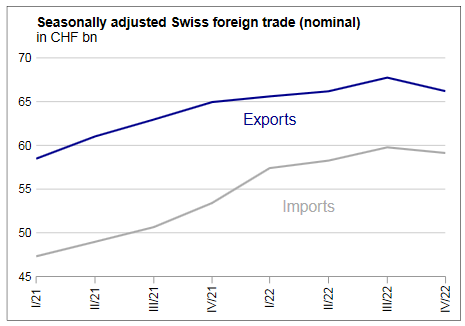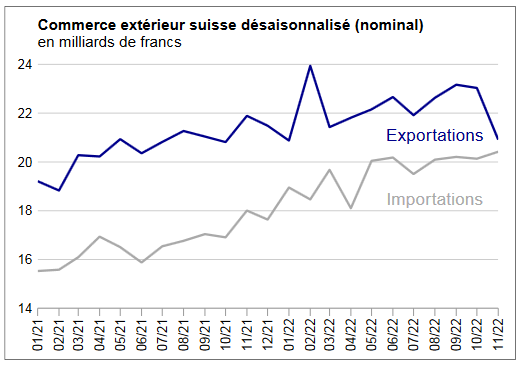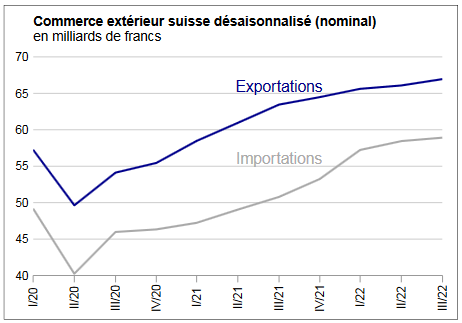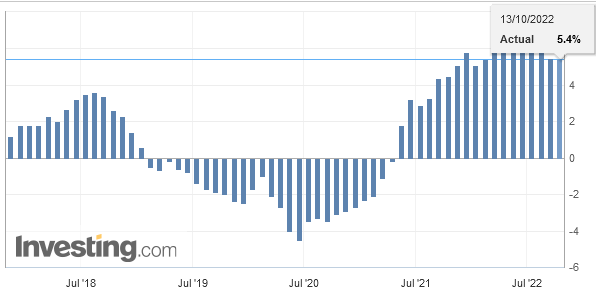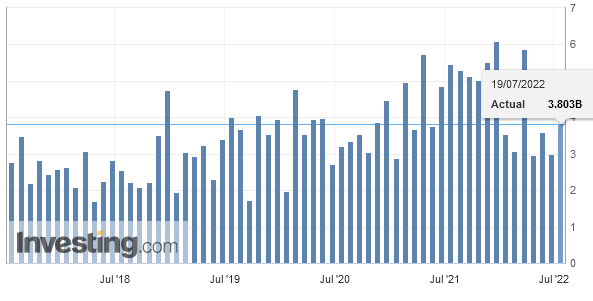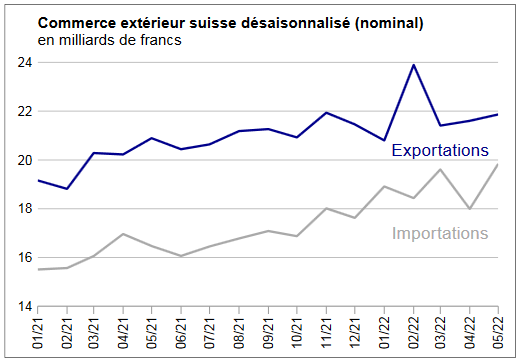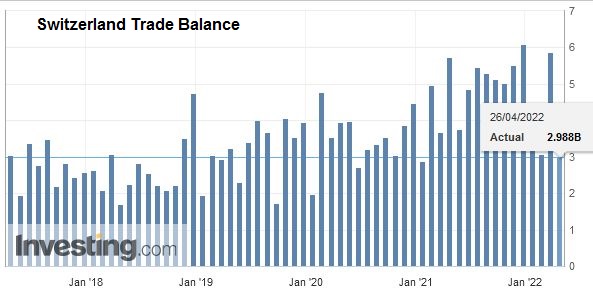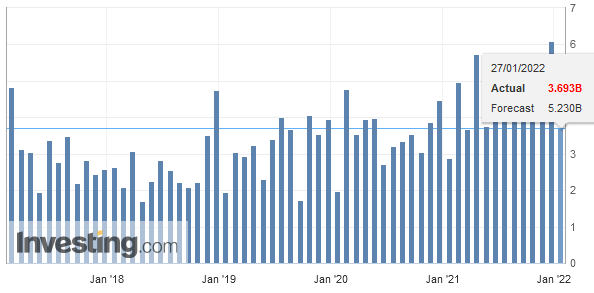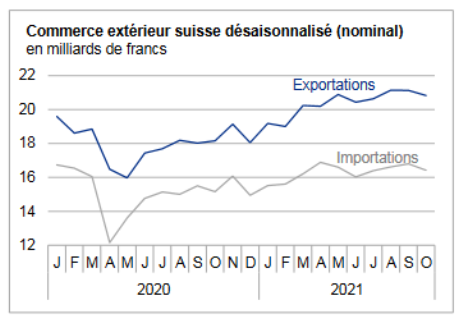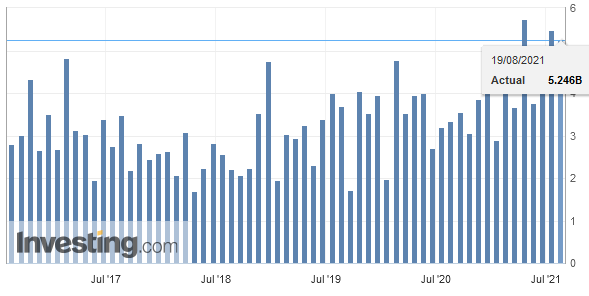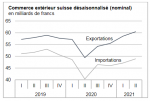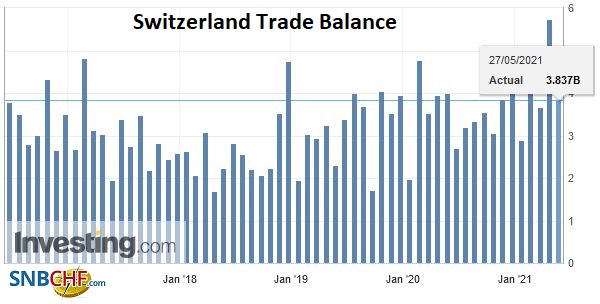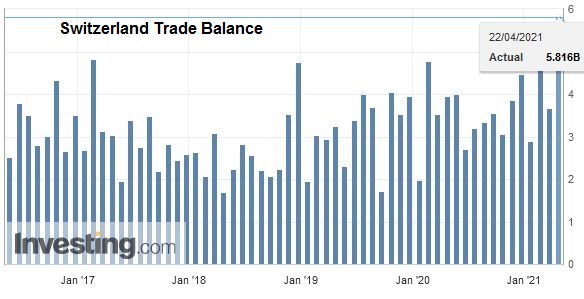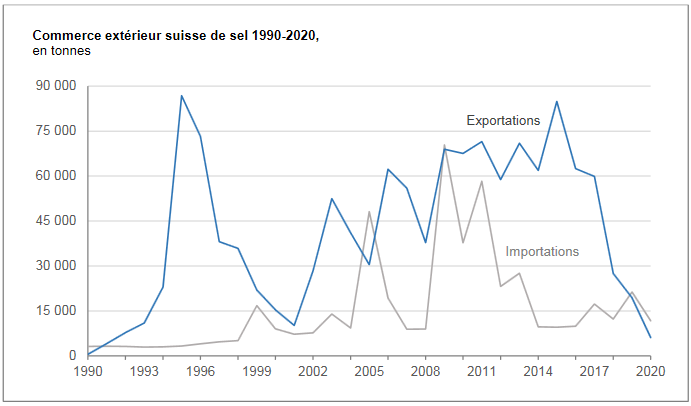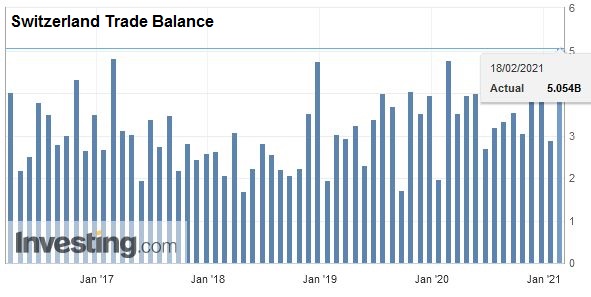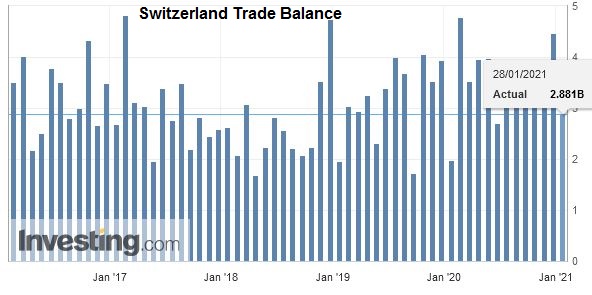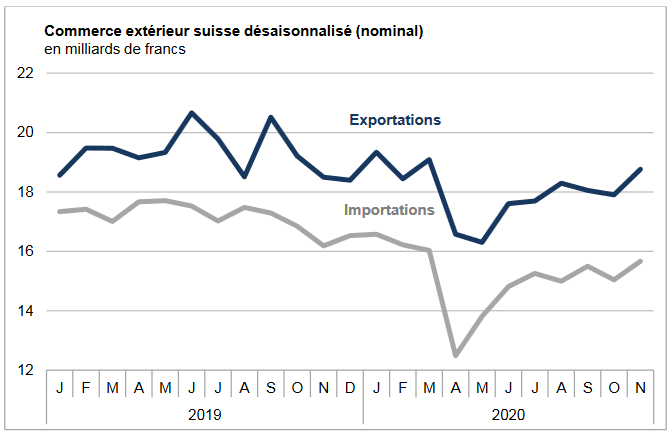We do not like Purchasing Power or Real Effective Exchange Rate (REER) as measurement for currencies. For us, the trade balance decides if a currency is overvalued. Only the trade balance can express productivity gains, while the REER assumes constant productivity in comparison to trade partners.
Who has read Michael Pettis, knows that a rising trade surplus may also be caused by a higher savings rate while the trade partners decided to spend more. This is partially true.
Recently Europeans started to increase their savings rate, while Americans reduced it. This has led to a rising trade and current surplus for the Europeans.
But also to a massive Swiss trade surplus with the United States, that lifted Switzerland on the U.S. currency manipulation watch list.
To control the trade balance against this “savings effect”, economists may look at imports. When imports are rising at the same pace as GDP or consumption, then there is no such “savings effect”.
After the record trade surpluses, the Swiss economy may have turned around: consumption and imports are finally rising more than in 2015 and early 2016. In March the trade surplus got bigger again, still shy of the records in 2016.
Swiss National Bank wants to keep non-profitable sectors alive
Swiss exports are moving more and more toward higher value sectors: away from watches, jewelry and manufacturing towards chemicals and pharmaceuticals. With currency interventions, the SNB is trying to keep sectors alive, that would not survive without interventions.
At the same time, importers keep the currency gains of imported goods and return little to the consumer. This tendency is accentuated by the SNB, that makes the franc weaker.
Texts and Charts from the Swiss customs data release (translated from French).
Exports and Imports YoY DevelopmentIn October 2017, Swiss foreign trade continued its advance. Adjusted for working days, exports grew by 5% against 7% for imports. Growth, however, weakened slightly compared to previous months. The trade balance is closing with a surplus of 2.4 billion francs. ▲ Exports: Strong growth in MEM and watchmaking products ▲ Double-digit increase in exports to the 2nd largest market (USA)
▼ Chemicals and pharmaceuticals falter in both directions of traffic |
Swiss exports and imports, seasonally adjusted (in bn CHF), October 2017(see more posts on Switzerland Exports, Switzerland Imports, )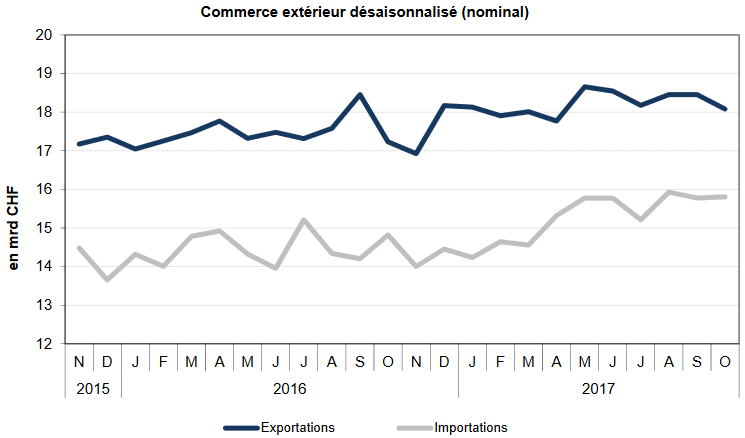 Source: Swiss Customs - Click to enlarge |
Overall EvolutionIn October 2017, exports adjusted for working days grew by 5.0% year-on-year (actual: + 2.3%). Compared with September 2017 and after seasonal adjustment, they contracted by 2.0%. They have risen somewhat since May’s record high. The imports |
Switzerland Trade Balance, October 2017(see more posts on Switzerland Trade Balance, )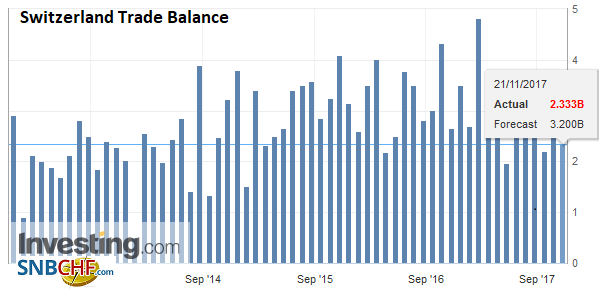 Source: Investing.com - Click to enlarge |
ExportsExports: large-scale dynamismExport growth was largely supported in October 2017, with only In the leading quartet, metals (+189 million francs), among others, continued their momentum. Sales of jewelery were up by 123 million francs. Watchmaking (+ 9%) and the machinery and electronics sector (+ 5%) also shone. In the latter, almost all segments gained ground, including machine tools (+ 16%). The decline in the chemicals-pharmaceuticals sector (-1%) is explained by the drop in drugs (-11%, -413 million); the immunological products, for their part, surfed the wave of success (+221 million). Swiss exports have gained ground in the main markets. Latin America grew by a quarter (Brazil: + 71%). It is followed by the |
Swiss Exports per Sector October 2017 vs. 2016(see more posts on Switzerland Exports, Switzerland Exports by Sector, )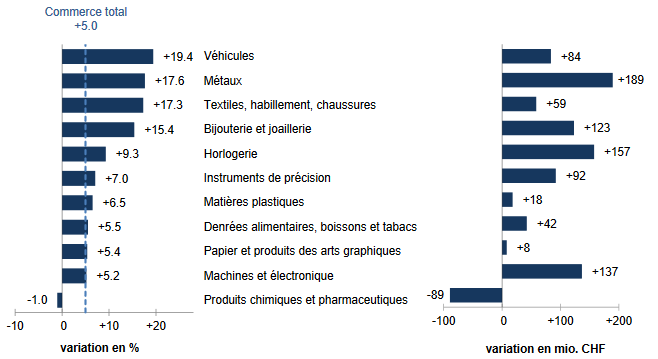 Exports by commodity group: Nominal changes adjusted for working days compared with October 2016 Source: Swiss Customs - Click to enlarge |
ImportsImports: Jewelery returns blur the cardsImports by different groups of goods showed a disparate evolution, ranging from -11% to + 65%. Half of the growth was based on jewelery (+564 million, mainly merchandise returns). An increase of one fifth marked the imports of energy products (real: + 17%) and metals (real: + 9%). In the chemicals and pharmaceuticals (-4%), the decline of half of the active ingredients has sealed the result (-478 million francs over one year). On the contrary, arrivals of medicines increased by 18% (+272 million). Imports from North America contracted by 4% (USA: -5%) while those of the other two main partners accelerated. Asia took off 17%, boosted by jewelery returns from the United Arab Emirates (+408 million francs). Shipments from China were up 7%, while those from Japan were halved (-214 million, jewelery and watches). Shipments from Europe increased by 4%. Here, the flight of Belgium and France contrasted with the plunge of Austria and Ireland (-566 million). |
Swiss Imports per Sector October 2017 vs. 2016(see more posts on Switzerland Imports, Switzerland Imports by Sector, )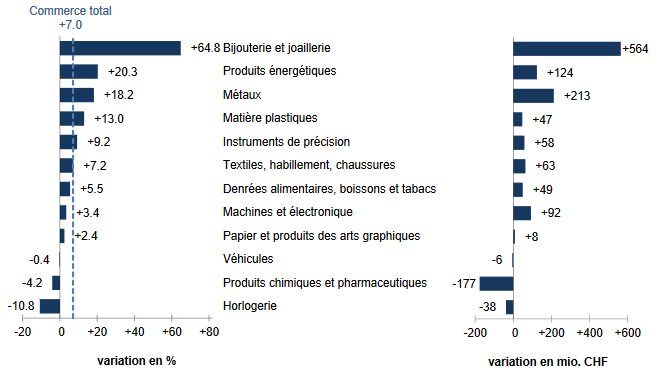 Imports by commodity group: Nominal changes adjusted for working days compared with October 2016 Source: Swiss Customs - Click to enlarge |
Full story here Are you the author? Previous post See more for Next post
Tags: newslettersent,Switzerland Exports,Switzerland Exports by Sector,Switzerland Imports,Switzerland Imports by Sector,Switzerland Trade Balance





















